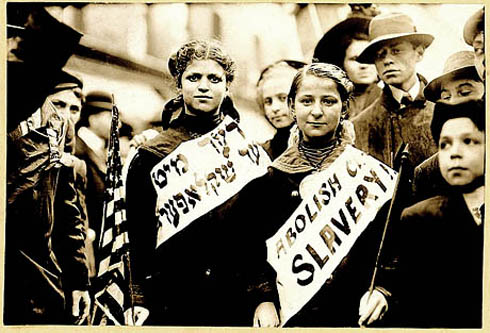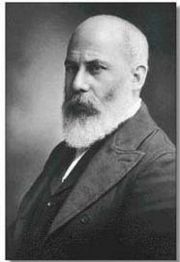Socialism
From The Peopling of NYC
Formation of Jewish Unions
American working conditions produced the first Jewish proletariat bloc and forced the radical intellectuals into factories, generating the belief there was a Jewish class and it could be organized. In 1885, the Jewish Workingmen’s Association was founded. The union was more idealistic than unions of other ethnicities. It was also the first union to carry the label “Jewish” in its name. Between 1888 and 1890 some 40 unions in the United Hebrew Trades were established, but it was difficult to maintain solidarity during the off-season or strike.
Growth of Socialism
In 1886, the Jewish Workingmen’s Association formally affiliated with the Socialist Labor Party, led by Daniel DeLeon. Sections of the party were set up as early as 1887 in Russian and Yiddish. In 1901, “evolutionary socialists,” including Eugene V. Debs, broke from DeLeon and formed the Socialist Party of America. The Socialist Party of America broke apart because of DeLeon’s rejection of “dual unionism,” where people could be a part of the UHT and the AFL. The party was supported by a large and disproportionate number of Jews.
In 1908, Jews made up 39% of the Socialist party membership in Manhattan and the Bronx. Worker members accepted long-range socialist goals of the radical leaders, as well as the fact the Workmen’s Circle helped finance the socialist movement. The goal was to synthesize Jewish culture with the modern goals and values of the socialist movement.
Use of Socialism as a Unifying Tool
Socialist trade unionism offered the opportunity for common goals and personal promotion. The ideals of socialism fit well with the Jewish work ethic. It provided means for the population to be represented, so that one day the Jews, or their second generation children, would be able to climb the social ladder. With upward mobility and second generation immigrants, the visions were weakened over time.

